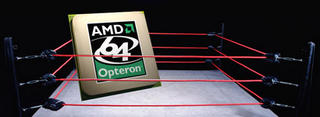
Selling a product, a service, an idea can be rather complicated. One must actually know what is being sold, what its applications are and who would find these products, services, ideas and their applications interesting.
Selling “those who find these applications interesting” to the seller, so that he can sell his products, his services, his ideas, to them can be even more complicated. The latter is what I have been trying to do for the past ten months.
You might by now be wondering what this profession is where I am apparently involved in selling people to another seller. Before you get all confused, angry and repulsed about the profession I am in and decide not to ever read anything written by such a disgusting person, I will tell you what this profession is. Its Advertising!
“Advertising is any paid form of non-personal presentation and promotion of ideas, goods, or services by an identified sponsor” – Definitions Committee of the American Marketing Association
Now, here is the question. Through advertising is a person or an entity actually selling products, services & ideas; or are they selling people to these products, services & ideas? I think it is the latter.
If you are a marketing grad you would surely have had your professors and others tell you that “Advertising is a mass medium tool aimed at disseminating brand information”; or if you are an average Joe with a cable TV connection, you would have probably seen the show ‘Storyboard’ on CNBC-TV18, where guys with French beards, orange streaked hair and ear rings tell you stuff about target audience, product planning, branding, channels of distribution etc in relation to advertising.
At first instance, both the marketing grads and the average Joes amongst you might point out (to me) that, what the definitions committee, your professors and the French beard guys are telling, contradicts the “selling people to the product” idea.
But, voluntarily or involuntarily, what they are actually telling you is that Advertising is more of selling people to a product, service or idea, rather than the other way round!
Am I just stupid to continue asserting this, or is there some slinky, cunning meaning to this?
Well, you guessed right. Logical fallacy or not, consider the following reasoning.
You are a toothpaste company trying to sell your brand, through advertising. Once you have identified that your toothpaste is orange in color, you next go about identifying all those who find this an invigorating color for toothpaste. You then release an advertisement extolling the benefits of orange toothpaste in whitening ones teeth.
This process can also be understood as follows. Finding out the interested audience; application of this audience and the toothpaste’s interest in it, in context to the advertisement, is its purchasing power; and your goal for the advertisement is to “make a sale” of this audience’s purchasing power!
In effect, what actually is getting sold through an advertisement is the interested audience’s purchasing power for the product, service or an idea. Hence, there is a focus on target audience, product planning, branding, channels of distribution etc from the French beard guys and the focus on the masses that are being sold through the medium of advertising in your professors’ definition!
Make sense? Or, do you think I am saying this from an advertisement salesman’s (or more aptly, response executive, as we are known in my organization) perspective? To make your job easier in making sense of this, I will leave you with this further thought to chew upon. If my job it is to sell an advertisement to a toothpaste company wanting to sell their toothpaste, what will I be trying to “make a sale of” through the ad?
The toothpaste, the toothpaste company, the ad itself or ------------------------------------------------ your purchasing power for the toothpaste!












